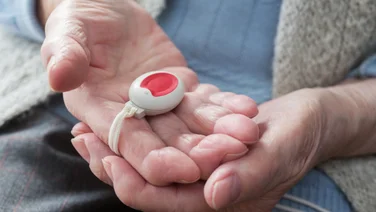We explain what’s involved in orthopaedic surgery, as well as benefits, risks and how to find the right surgeon.
Orthopaedic surgery repairs damage to your musculoskeletal system (that means your muscles, bones, joints and connective tissue). It covers a wide range of procedures.
Whether you’re dealing with a sports injury, arthritis, or a degenerative condition, orthopaedic surgery offers solutions designed to restore function, reduce pain, and improve your overall quality of life.
Some of the most common types of orthopaedic surgery include:
- Joint replacement surgery: Replacing damaged joints, such as hips or knees, with prosthetics to relieve pain and restore function.
- Arthroscopic surgery: A minimally invasive technique used to diagnose and treat joint problems, often performed on knees, shoulders, elbows and ankles.
- Spinal surgery: Procedures aimed at treating conditions like herniated discs, spinal stenosis, or scoliosis.
- Fracture repair: Addressing broken bones, including through the use of screws, rods, plates or pins.
- Ligament reconstruction: Ligaments are connective tissue that help to stabilise the joint. Surgery on the anterior cruciate ligament (ACL) in the knee is one of the most common types of ligament reconstruction
Orthopaedic surgery varies in length and complexity depending on the exact procedure.
Benefits of Orthopaedic Surgery
- Pain relief and improved function: Orthopaedic surgeries are designed to alleviate pain, whether from injury, arthritis, or other degenerative conditions, as well as to restore function. Procedures like joint replacement or arthroscopic surgery target the root cause of discomfort, providing long-lasting relief and allowing you to enjoy everyday activities without pain.
- Enhanced mobility and independence: Restoring movement and flexibility is a core goal of orthopaedic surgery. By addressing underlying issues, such as worn cartilage or damaged ligaments, these surgeries help you regain mobility, making it easier to perform daily tasks, maintain an active lifestyle, or engage in your favourite hobbies.
- Quick recovery with minimally invasive options: Many orthopaedic procedures are minimally invasive, resulting in smaller incisions, less pain, and faster recovery times. This allows you to return to your regular activities more quickly, with less discomfort and downtime.
- Long-lasting results: Modern orthopaedic implants and surgical techniques are designed to provide durable, long-term solutions. Joint replacements, for example, can last 15-20 years or more with proper care.
- Personalised treatment plans: Orthopaedic care is highly individualised, focusing on your unique medical history, activity level, and personal goals. Your treatment plan is tailored to ensure the best possible outcomes, whether you’re recovering from an injury, managing arthritis, or addressing a condition you were born with.
Risks of Orthopaedic Surgery
Orthopaedic surgery is usually very safe, but as with any medical procedure, there are some risks. The risks may vary according to the specific procedure, but can include:
- Bleeding: You might experience bleeding either from the wound, or inside your body.
- Blood clots: After surgery you are at higher risk of blood clots, including deep vein thrombosis (DVT), pulmonary embolism (a blood clot in your lung) and damage to the heart muscle. A blood clot is more likely if you have to spend more time than usual lying down while you recover. You might be offered anticoagulant medications and/or compression stockings to reduce the risk of blood clots.
- Side effects of the anaesthetic: If you have a general anaesthetic, there is a small risk of side effects afterwards, such as feeling sick or dizzy.
- Infection: You could get an infection of the wound or around the joint. This is usually treated with antibiotics.
- Damage to nerves, tissue or bone: This is unusual, but there’s always a chance that a nerve, ligament or blood vessel could be damaged during the surgery, or that a bone could be fractured. Usually this can be repaired or will heal afterwards.
- Dislocation (after hip surgery): This is also uncommon, but sometimes the hip may come out of the joint, either soon after surgery or further down the line.
- One leg longer than the other (after hip replacement): The surgeon will work to avoid this. If there is a difference, it may be very small so that you don’t notice it, or you might need to wear a shoe with an adjusted sole.
- Shoulder stiffness (after shoulder arthroscopy): Shoulder stiffness is one of the most common complications of shoulder arthroscopy, especially if you’ve had a rotator cuff repair.
- Spinal cord damage (for spinal surgery): This is rare, but can cause paralysis of the lower body if it does happen.
Is Orthopaedic Surgery Available on the NHS?
In many cases, orthopaedic surgery is available on the NHS. However, waiting lists can be long, especially for things like hip and knee replacements. Your GP may suggest you try other approaches first, such as losing weight (if you are overweight) to reduce the strain on your joints, or using walking aids.
How to Get Started with Orthopaedic Surgery
Taking the first step towards orthopaedic surgery is simple. Here’s what the process typically involves:
- Choose the right surgeon for you: The choice of surgeon will depend on factors like whether you’re having treatment on the NHS and whether you want to have the surgery close to home. If you opt for private treatment, Clear Living can help match you with the right clinic and surgeon to meet your needs. Your surgeon should be registered with the General Medical Council (GMC), on the specialist register and have a licence to practise. You might want to look up their sub-specialism and their experience dealing with your particular condition. If you’re having a joint replacement, you can use the National Joint Registry to look up a surgeon or hospital to see how many of those procedures they have carried out and some information about their outcomes.
- Consultation and assessment: Book an initial consultation with the specialist who will evaluate your condition, discuss your symptoms and goals, and determine the best treatment options for you.
- Customised treatment plan: Based on your assessment, a personalised treatment plan will be created, outlining the recommended procedure, recovery timeline, and any pre-surgery preparations or physiotherapy.
- Surgery preparation: Your provider will guide you through any necessary pre-operative steps, such as medical clearance or specific exercises to strengthen the area being treated, ensuring you are in the best shape possible for surgery.
- Surgical procedure: The surgery will be performed by a qualified surgeon. Most kinds of orthopaedic surgery are carried out under general anaesthetic. For arthroscopy it could be a general, local or spinal anaesthetic.
- Recovery: You might experience some pain and stiffness after surgery. You will be given advice about any activities you need to avoid, such as driving, and when you’ll be able to return to them. You’ll be given exercises to do regularly, to promote healing and regain strength. Depending on the procedure you’ve had, recovery can take anything from a few weeks to a few months. Routine check-ups and exams are common, as well as imaging tests like X-rays to see how your body is healing.






